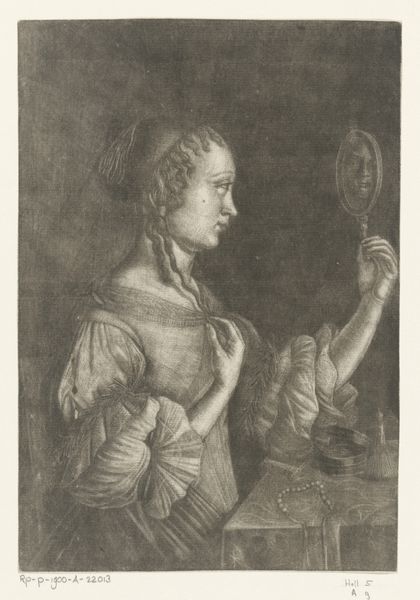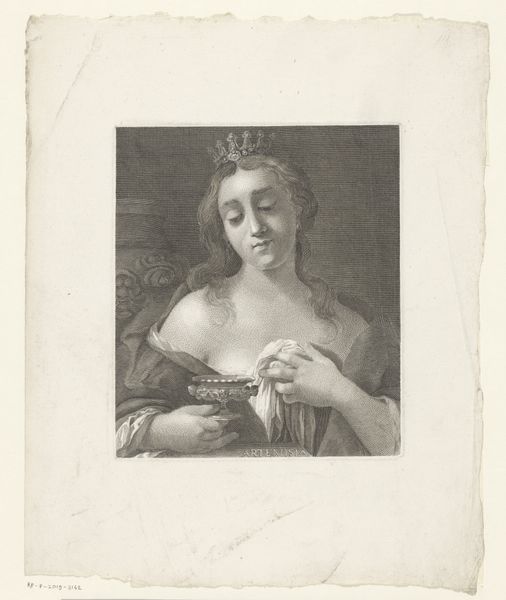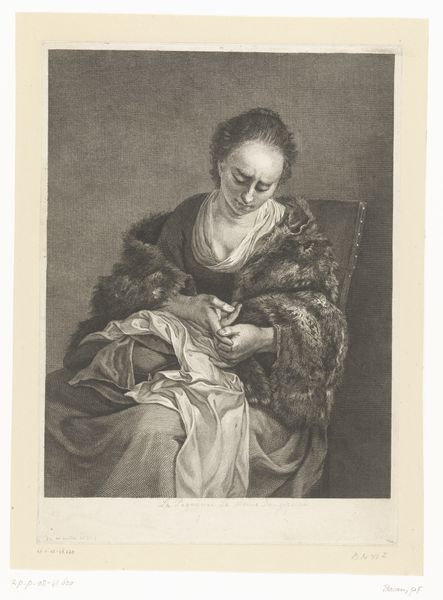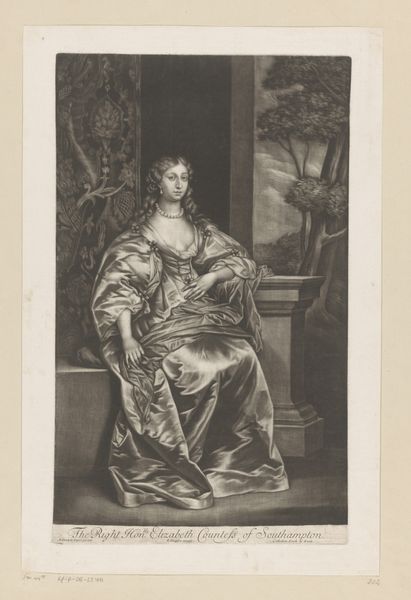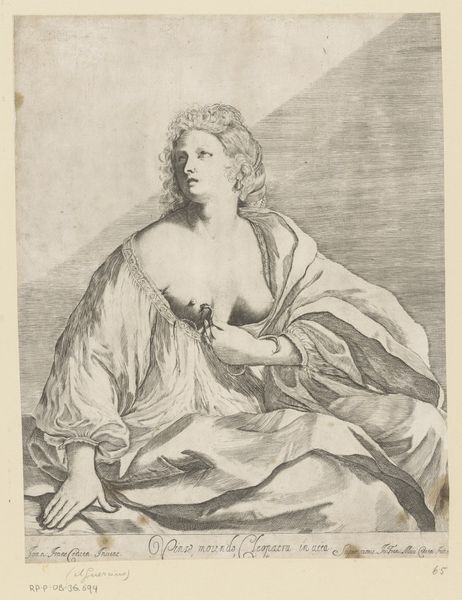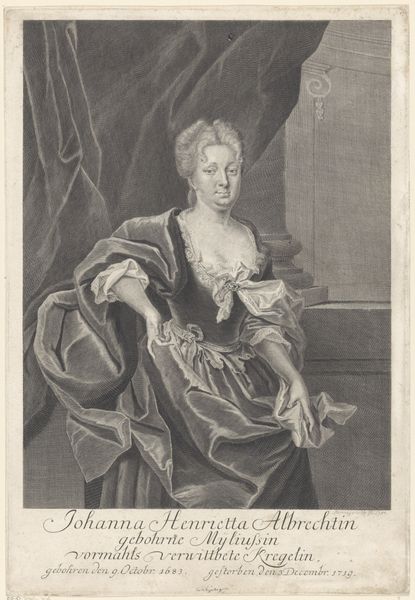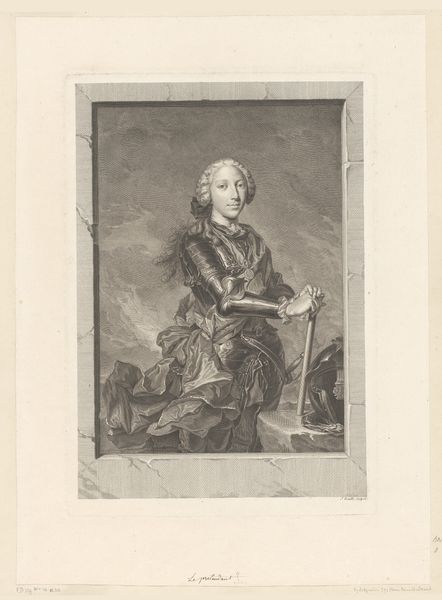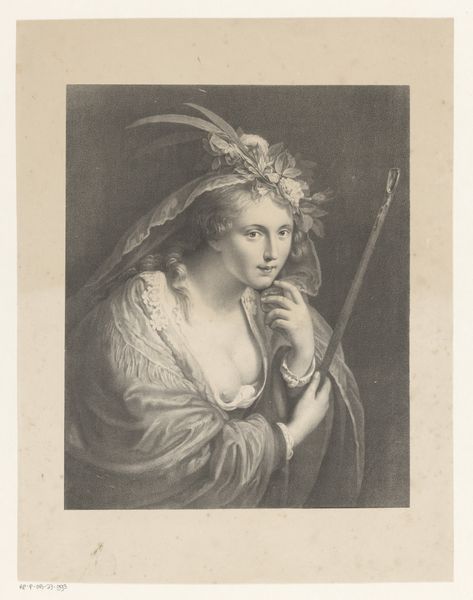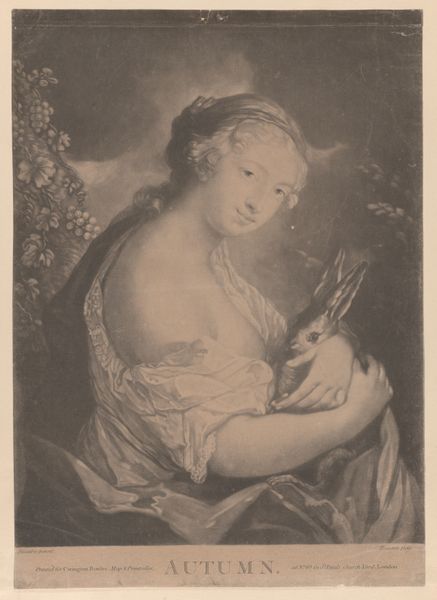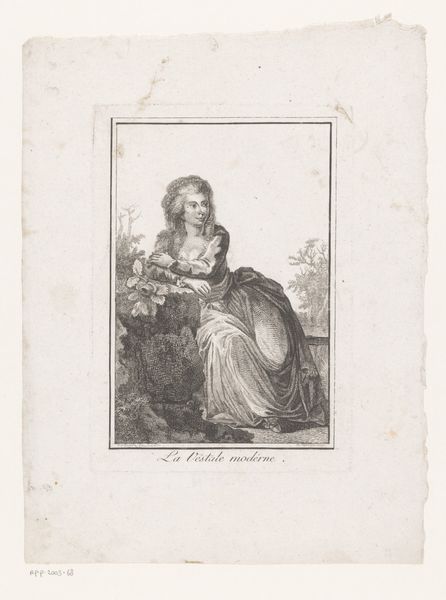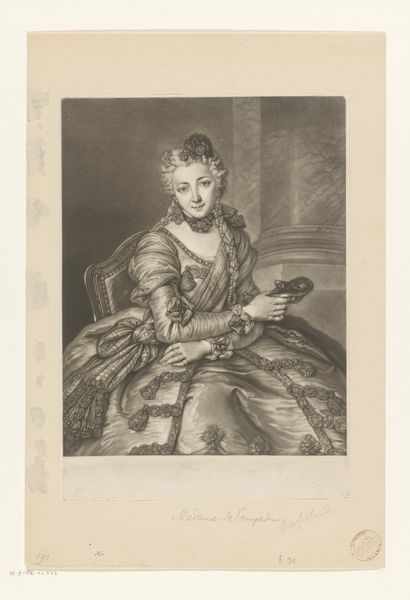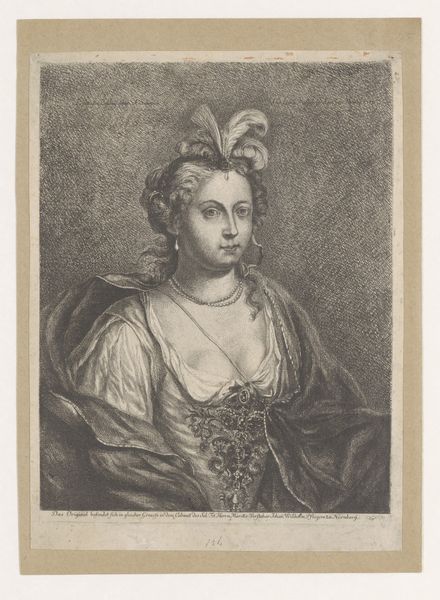
Dimensions: Sheet: 21 5/16 × 15 13/16 in. (54.2 × 40.2 cm) Plate: 18 1/16 × 14 3/16 in. (45.8 × 36 cm)
Copyright: Public Domain
Editor: This is Marcellin Desboutin’s “La Flutiste, d'apr\u00e8s Domenico Fetti,” from 1891, now at the Met. It's a print of a painting, and it has this soft, hazy quality, a dreamy rendition of what looks like a musician. What stands out to you? Curator: I see echoes, memories of older stories told and retold. Desboutin doesn't just copy Fetti; he translates him, using the language of printmaking to access something primal about music, performance, and even the feminine form itself. Editor: Primordial how? Curator: The flute is more than an instrument; it’s almost a scepter. In antiquity, wind instruments were associated with deities and power, even love. Do you feel how the subject's gaze draws us in, even as she is focused on the act of creating melody? Desboutin captures something inherently magical in her posture. She is no longer an individual but an archetype. Editor: Like a muse figure. Curator: Exactly. What does her costume communicate? Notice how her shoulder is revealed, subtly suggesting eroticism in the Baroque tradition. Yet, that knowing expression on her face implies a sense of control over her sensuality, something more knowing, more mature. Editor: So Desboutin layers symbols: music, sensuality, power. The gaze of the player, the pose of the body. He takes something from Baroque tradition and reinvents it. Curator: Precisely. It becomes an exercise in remembrance. And he invites us, the viewers, to continue that act of interpretation and remembrance. Editor: That’s really changed my perception of it; I see so much more there now than I did at first glance.
Comments
No comments
Be the first to comment and join the conversation on the ultimate creative platform.
